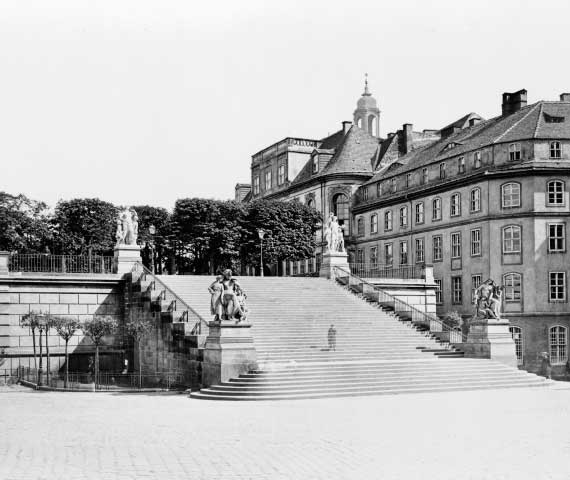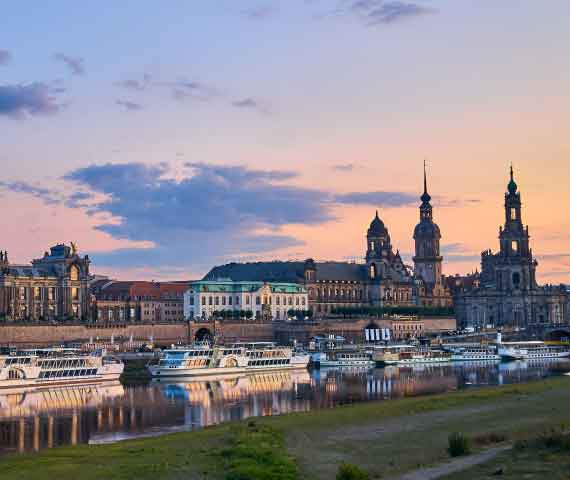Count Brühl's main residence was a palace in the centre of Dresden, between Augustus Strasse and Brühl’s Terrace, which was built from 1734 onwards according to plans by Johann Christoph Knöffel and extended several times until 1763. It was connected via a bridge to the ramparts facing the Elbe, on which Count Brühl had a garden with fountains and buildings built from 1739. The Brühl Garden was filled with the "Brühl's Glories". These included the Brühl Library, the art gallery, the Belvedere and the Brühl Garden Pavilion.
King Frederick II of Prussia quartered himself in the Brühl Palace in the winter of 1756-57 in order to humiliate his opponent. In 1759 he gave the order to destroy the Belvedere. In 1774, the Brühl Palace was taken over by the state from the Brühl estate. In 1900 it was demolished and replaced by the new Ständehaus building.
The Brühl Terrace was made accessible to the public by the construction of a flight of steps leading to the Schlossplatz in 1814. The buildings from the Brühl period no longer exist today, but a fountain and two sphinxes remain from the garden design.
Today: The gardens belong to the Staatlichen Schlösser, Burgen und Gärten Sachsen GmbH (“the Palaces, Castles and Gardens of the State of Saxony GmbH”)









